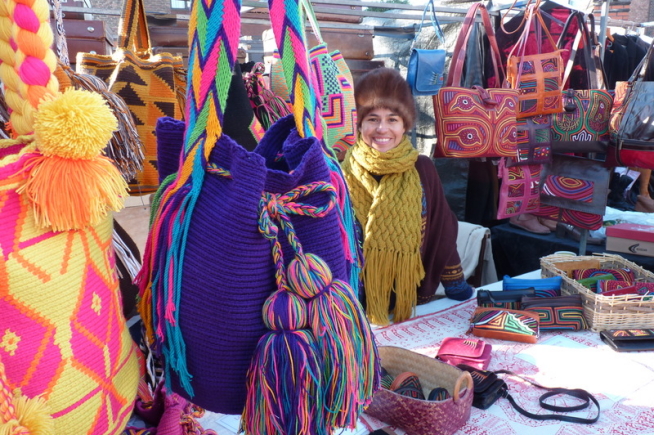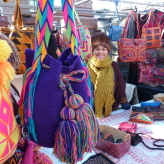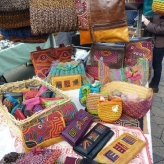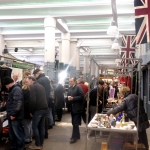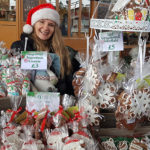Lovely Things from the Land of Colours
Lovely Things from the Land of Colours
Greenwich,London
- Phone: +44 753 3069250
- Website: http://julianasalgadovega.blogspot.co.uk/
- Facebook: www.facebook.com/LovelyThingsFromTheLandOfColours
Tags: bags, Columbian craftwork, hand-woven, mochila
I grew up in Colombia surrounded by the beautiful hand made, embroidered and woven craftwork of scores of indigenous peoples. After finding myself in London and far from Colombia, I wanted to bring to this country some of the colours and lovely things I missed from my childhood.
The bags, mochilas, bracelets and purses that I have chosen to help brighten up the London winters are a small and unique selection of original, handmade craftwork.
Using traditional weaving techniques, native Colombian palm fibres, or luxurious, soft leather, are made into products that are given unique and original designs based on the natural world that surrounds the indigenous communities of the women who make them. Their work is then sold through the indigenous peoples own cooperatives to ensure the workers and their communities receive a fair price.
Some of my Lovely Things…
Mochilas:
Are hand woven by the Wayuu people of La Guajira, on Colombia’s Caribbean coast. Wayuu girls are traditionally taught the art of sewing at an early age, as part of a culture dominated by female artisans, spiritual shamans and community leaders. ‘Susu’ is the name of the mochila in their language, and it means ‘that which walks with me’. The designs are inspired by the Wayuu’s desert culture and are often unique to each woman, who spends as much as one month creating a single mochila.
Molas:
Are beautifully colourful pieces of layered fabric handmade by the Kuna people on Colombia’s Caribbean coast and the San Blas Caribbean islands of Panamá. Molas are crafted by hand with reverse-appliqué needlework. Two or more layers of different coloured cloth are stitched together, and the design is then formed by cutting away parts of each layer. The edges of the layers are then turned under and sewn down. Often, the stitches are nearly invisible. This is achieved by using a thread the same colour as the layer being sewn, sewing blind stitches, and sewing tiny stitches. The finest molas have extremely fine stitching, made using tiny needles. The largest pattern is cut from the top layer, and smaller patterns from each subsequent layer, thus revealing the colours beneath in successive layers. The design is inspired by shapes and figures, birds, creatures and flowers, from the world that surrounds the Kuna’s communities in the Urabá region of Antioquia, on the Colombia – Panamá frontier. Traditionally, no two molas are the same – each design, or fragment of design, is unique.
Fique bags:
Are made from the soft leaves of the fique palm, which originates in the high Colombian Andes mountains. The strong fibres – also traditionally used to make sacks for Colombia’s famous coffee beans – are cut, softened by boiling in water, and coloured by adding flower petals to the pot.
Werregue:
Is made from the sharp leaves of a 20 meter high palm tree with a thorny trunk. Bracelets, vases and bowls are carefully woven by the women artisans of Colombia’s Choco Pacific coast who belong to the Wuanana indigenous peoples. The women dye the strong fibres of torn werregue palm leaves by boiling them in a pot together with natural fruit juices and flower petals, before spending several days weaving them into bracelets.
Cana Flecha:
Are palm leaves woven by the indigenous Sinu peoples of Colombia’s tropical savanna into patterns similar to the country’s famous Vueltiao sombrero hats, and Iraca is a soft, flexible material made from the toquilla palm, and woven by Afro-Colombians on the Pacific coast into bags and hats such as the renowned Panama hat.
Colombian vaqueta leather:
Is luxurious and soft, and marks, creases and scars – which occur naturally in the leather hide – are valued and allowed to show in the finished product. Colombian leather becomes even softer as it matures, and its colour and shine becomes brighter the more a bag is used.
Search Markets
april, 2024
Sort By:
date
M:
All
All
Antique Market
Art Fair
Baby and Children
Boutique Market
Brocante
Carboot Sale
Christmas Market
Collectors Market
Community Market
Craft Market
Designs & Makers
Farmers Market
Fashion Market
Festival
Flea Market
Food Market
Fresh Produce
Funday
Handmade
Jumble Sale
Market Event
Night Market
Pop Up
Record/Vinyl Fair
Streetfood Festival
Vintage and Retro
Wedding Fair
S:
All
All
Pop Up
No Events


